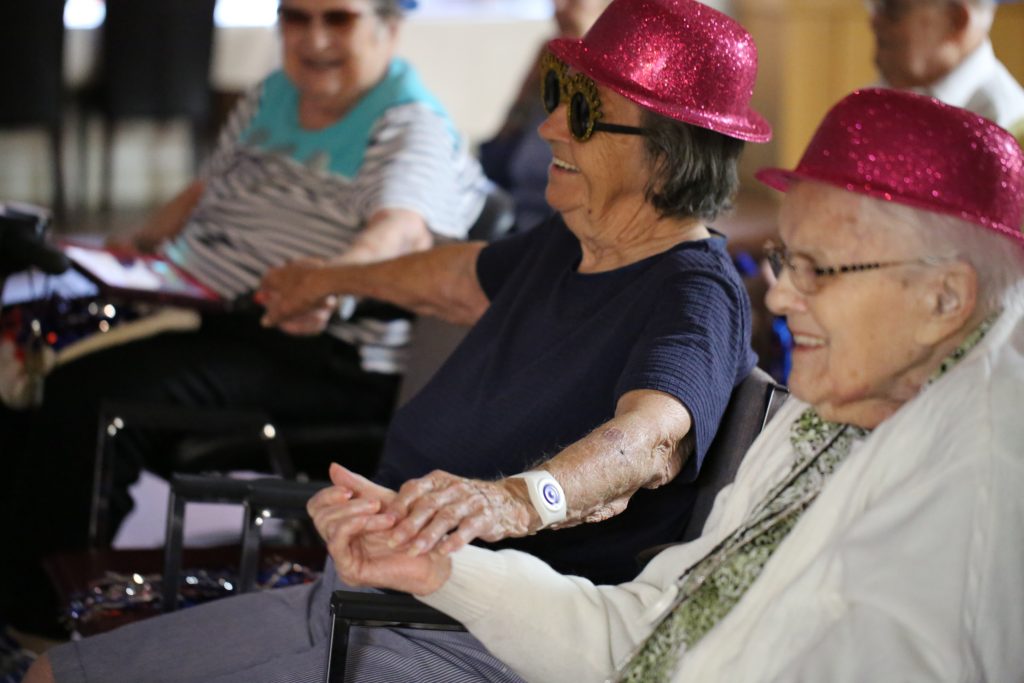
Pros & Cons for Online Activity Platforms for Older Adults
Due to social distancing policies being implemented worldwide to help slow the spread of COVID-19, most senior citizens are either home-bound or isolated within their senior living communities. Social isolation is now a necessity for the safety of seniors, but it can have serious impacts on their social, mental, and physical health.
Though senior centers work to keep residents active and engaged at all times, the current suspension of in-person activity operations is creating a challenge. Many communities didn’t have contingency plans in place to deal with the safety measures COVID-19 requires, and this has affected the wellbeing of their residents. These policies are helping to keep the elderly safe from infection, but they’ve left senior centers and their activity directors searching for solutions that keep their residents safe from the effects of social isolation as well.
The most efficient answer to these issues is using online activity and entertainment resources. Providing virtual socialization and online wellness programs allows seniors to stay healthy without the risk in-person socialization can bring. Taking advantage of technology is necessary if senior centers want to continue their community experience with as little interruption as possible.
On-Demand TV and Video Libraries:
Since residents and seniors primarily keep to their rooms, activity directors should check with their community’s broadcasting provider to see what options are available for their center. The provided TV shows and movies can then be viewed by seniors independently in their rooms.
Pros: Television is a recognizable medium, and one that residents probably already have experience with it. It’s also convenient, since it only requires a TV and a broadcasting service (which most centers already have) and the viewing options are on demand. This option works best when there are few other electronic devices in the community, and your provider offers several options.
Cons: Though TV and Video Libraries can provide entertainment to many seniors at once, having pre-selected material allows for little personalization. There is also very little interaction involved; passive consumption of television may keep residents occupied, but offers little in social, mental, and physical benefits. Most families don’t want to stick their children in front of a TV indefinitely, and the same should be said for parents.
Online Games:
There are many games available for seniors online, from memory and brain games, to online versions of crosswords, sudoku, mahjong, and puzzles. The AARP offers a wide variety of online games, and if seniors have electronic devices, they can download applications like Elevate and Lumosity for some fun brain “workouts” (check out more memory-boosting apps here).
Pros: Online games—especially the brain-game variety—provide intellectual stimulation, improve memory, and aid in preventing cognitive decline. They’re also fun and interactive, and individual seniors can choose their favorites.
Cons: Though most games are free, some can cost money, and others may require in-app purchases, which could lead to seniors spending more than they realize. Finding, purchasing, and using the games may also require staff support. Additionally, if a senior doesn’t have an electronic device that supports these games, they won’t be able to participate.
YouTube Live and Facebook Live:
These are live streaming services showing live games, sports, music, and more. They also allow you to add your own live streamed content.
Pros: Facebook and YouTube are large, recognized, stable technology companies that offer a variety of videos. And if you’re uploading your own content, you can provide whatever sort of programming you want to show your residents. Fortunately, many seniors are already on Facebook and know how to use the interface, and YouTube has a simple search bar at the top of their pages for its users. Plus, both of these services are free, unless you’re subscribing to Youtube Premium.
Cons: The size and capability of Youtube and Facebook are a great advantage, but the reach of these platforms also leaves them vulnerable to attempts in online scamming. Though they have security processes, their primary source of revenue is advertising, and both companies don’t necessarily have the best track records of maintaining user privacy. This could therefore be a little dangerous for seniors, since they are already targeted. In addition, if you’ve decided to provide your own content, you will need staff to create, produce, and upload the content, as well as to provide tech support to seniors who need it. You’ll also need to continue the same administrative duties as in-person activities, such as attendance, check-ins, and program results. Plus, YouTube and Facebook aren’t very interactive.
Zoom:
Zoom is a video-conferencing application that allows several users to join at once. You can host live programming through your computer, and have your seniors watch and interact from the safety of their room. Zoom has significantly grown in popularity, especially in the recent months due to an increased number of companies functioning entirely over video conferencing. Zooms active users increased from 10 million a day to 200 million a day, in just three months.
Pros: Zoom offers free, 40-minute calls for up to 100 attendees, and has been allowing for free extended calls as well. There are admin features for control over the calls, it allows its users to interact (not just passive viewing), and it only takes a few clicks to set up. Plus, it provides you the flexibility of sharing your own content with your residents.
Cons: Despite its growth, Zoom has also been facing inquiries over their security practices. Anyone with a Zoom meeting link can “Zoombomb” attendees, meaning they can interrupt your class and broadcast inappropriate content, and intruders may be able to hijack users’ webcams. Zoom’s app has also been sharing its data with third parties (like Facebook), which is another breach in security, and has recently been sued for overstating their privacy standards. When you’re working with vulnerable populations like the elderly, it’s important to take care with what they’re exposed to.
Live Streams of Worldwide Attractions:
Several art, cultural, and environmental institutions have been supplying live streams to viewers worldwide. Zoos, museums, and even national parks have been sharing various wonders, and celebrities have even been live streaming concerts and music sets to followers and fans. Provide links and sources for these events, and any resident with an internet connection and device can view them.
Pros: There are a ton of live, free resource options, and a wide variety to choose from. These lists aren’t exhaustive, but this CNN article has a little something for everyone. Live streaming technology can have a ton of benefits that improve seniors’ wellness.
Cons: Seniors need both internet access and a device to use. Setting residents up with the right links can also add staff burden.

Taking the time to find the right resource to use at your senior care community is important, and depending on what you’re equipped with, several of these options could be helpful. However, it’s important to keep in mind that for the more interactive options, it will be necessary to develop your own processes around tech support, production, technical streaming, education, content and activity calendar management, scaling, and administration.
All of these extra steps can prevent senior centers from taking advantage of this technology, which is why at televëda we make sure to provide an end-to-end solution that covers all of these services for the communities we work with. This is why, despite the coronavirus pandemic, we’ve been able to seamlessly provide senior centers with our live streamed fitness, educational, and gaming classes that are two-way and interactive.
But we aren’t just our software: we’re the tech support, consultants, security advisors, expert teachers, content curators, and data analyzers. televëda understands that every community is unique, which is why we create data reports tracking wellness and engagement to ensure a positive ROI, and that the vision you have for your center is successful and can best serve your residents. As a community partner, we develop and implement programming that puts you at a competitive advantage among other senior living centers, and allows you and your staff to focus on the core duties and needs of your community.
Keeping seniors healthy and safe is the utmost priority for senior centers at the time. And with these policy changes have come new challenges for everyone. Fortunately, there are a plethora of resources for activities directors and managers to use, depending on the needs and interests of their senior community. It’s important to understand the advantages this technology gives us, especially when it can help keep seniors socializing and engaged.
Start Today!
If you work for a senior community and would like further information about what we can do for your residents, please please contact us at [email protected], or call our toll free number: (833) 299-1449.